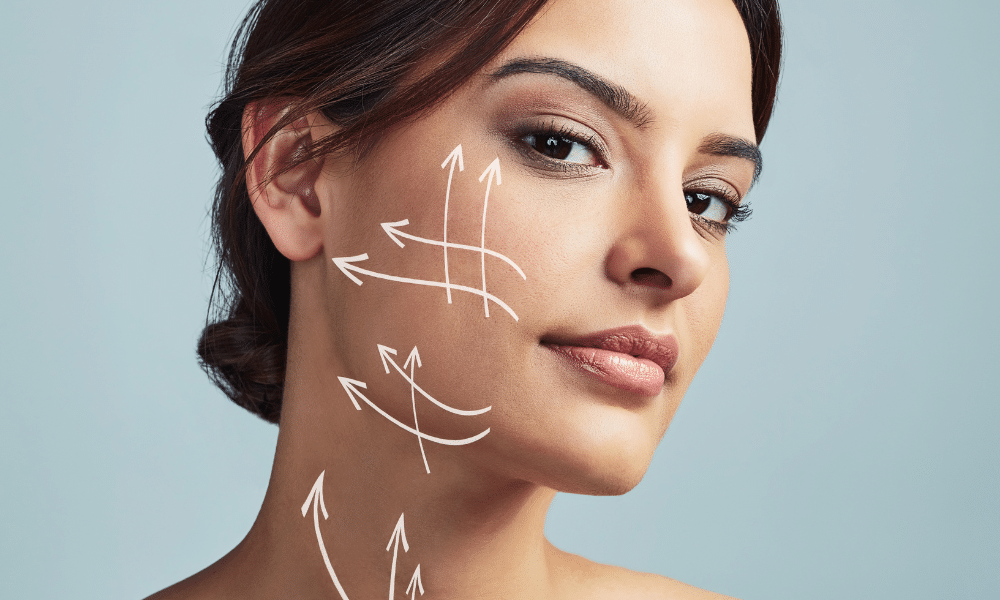
FaceTite is a new, less invasive cosmetic treatment that has been making waves in the cosmetic industry.
But how exactly does FaceTite work? How long do the results last?
In this article, I will talk about FaceTite, its benefits, and how long its results usually last.
What Is FaceTite?
FaceTite boasts radiofrequency-assisted liposuction (RFAL) technology, combining radiofrequency waves with gentle liposuction to produce younger-looking skin. It is primarily targeted at the lower half of the face and neck to improve sagging skin.
As a less invasive procedure, FaceTite requires fewer, tinier incisions. It involves a cannula device inserted beneath the skin, emitting thermal and radiofrequency energy deep into the skin cells to destroy and liquefy fat cells on the face and neck. It also stimulates collagen production for thinning skin.
The system used in FaceTite is marked safe, with built-in safeguards monitoring and controlling skin temperature in real-time for patient safety. It is an excellent cosmetic treatment resulting in more evident skin laxity improvement. Plus, treatments like this tighten skin significantly.
Is FaceTite as Good as a Facelift?

Despite being described as a minimally invasive treatment, FaceTite does result in significant swelling and potential bruising. It can produce facelift-like improvements on the face through its RFAL technology however it is not able to lift the face or remove lose skin, in other words it is only suitable for mild ageing. It creates a visible slimming effect on the lower facial profile, which boosts the patient’s overall facial features.
Traditional facelifts heavily involve excisional surgery, which excels at giving better contours, more apparent improvements, and long-lasting facial refinements. Most of its drawbacks stem from its scar production, longer downtime for the recovery period, greater surgical risks and complications, and higher costs.
While both procedures have skin-tightening benefits and facial improvements, it’s still up to the patient whether a traditional facelift or FaceTite is the better option. It all depends on their cosmetic goals and concerns, resources, and tolerance to downtime during recovery.
However, while FaceTite can produce facelift-like results, its effects are still more subtle compared to traditional facelifts and other invasive cosmetic treatments. It’s always best to consult a skilled and experienced surgeon like Dr. Julian De Silva at the Harley Street Clinic about treatments that best address your cosmetic concerns.
Benefits of FaceTite
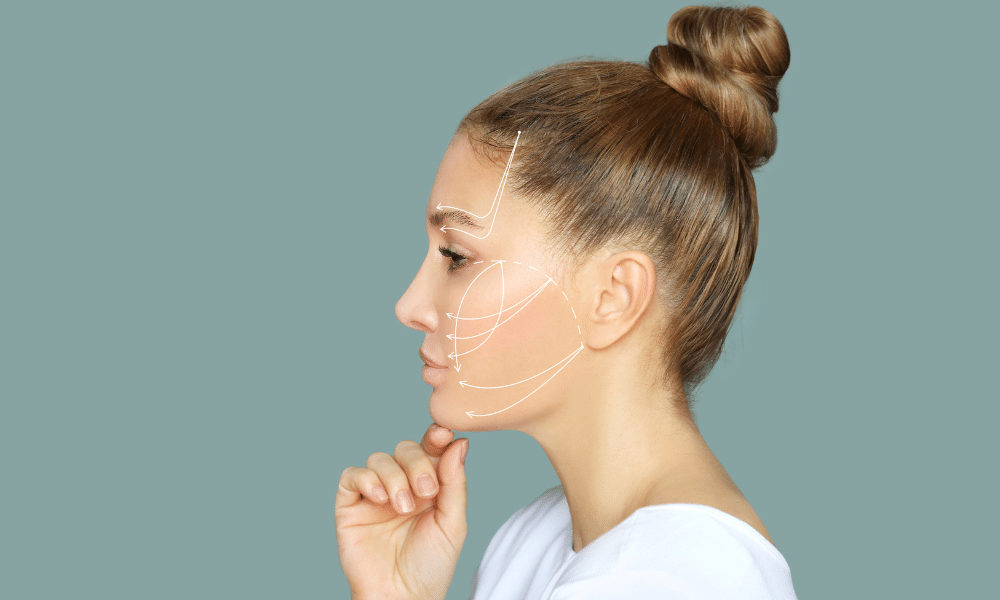
Here are the benefits of FaceTite:
Gets Rid of Sagging Facial Skin
FaceTite technology stimulates collagen production with radiofrequency skin-tightening waves. This activates a tightening, toning, and smoothing effect on the skin. It also stimulates existing collagen fibres, which creates new skin firming collagen almost immediately.
Moreover, these waves disrupt and liquefy fat cells that can be suctioned out through traditional liposuction. As a result, it eliminates saggy skin and tightens it for a more youthful look.
Creates a Slimmer Silhouette
The radiofrequency energy involved in a FaceTite procedure is proven to work more effectively than other non-invasive treatments. It penetrates deeper into the skin, giving a better facial contour and skin tightening effect.
Additionally, its fat coagulation mechanism gives a more evident trimming effect on the lower facial profile. Then, a gentle liposuction complements this.
In most cases, targeting the lower half of the face creates stronger facial improvements and a slimmer silhouette. This is where FaceTite best addresses the patient’s cosmetic concerns.
Less Invasive Thank Cosmetic Surgery
FaceTite requires fewer and tinier incisions, significantly reducing recovery time, surgical and facility costs, health complications, and visible scarring. Patients can go back to their daily lives and responsibilities within two to four days following the treatment.
Shorter Recovery Period
FaceTite is an outpatient procedure performed with simple local anaesthesia. It usually takes 90 minutes or less. Because it is less invasive, most patients can enjoy a significantly shorter recovery period and are allowed to go home the same day as the treatment.
Some patients may experience discomfort but can return to work and activities in a couple of weeks. Mild swelling and bruising may persist for more than a week, but an aftercare routine helps speed up the recovery.
Long-Lasting Results
Due to FaceLite’s advanced RFAL technology, the improved facial results of this procedure can last up to five years. It reaches deep into the skin, producing a longer-lasting effect than other non-invasive cosmetic procedures.
However, several factors may affect its longevity. It varies from the patient’s lifestyle and daily habits and adherence to the aftercare routine, which could extend or reduce its cosmetic results. Limiting sun exposure and using high-SPF sunscreen help prevent future wrinkles and lines from forming.
Can Be Combined With Other Cosmetic Procedures
FaceTite can be combined with other minimally invasive treatments like Botox, dermal fillers, laser resurfacing, and chemical peeling.
Doctors can create personalised treatment plans for their patients depending on their aesthetic goals and areas of concern. Common body features involved in these treatments include cheeks, neck, chin, jowls, abdomen, and inner thighs.
Tightens Loose Skin
The radiofrequency and thermal energy that the FaceTite technology administers to patients can effectively destroy and eliminate fat cells. At the same time, it stimulates the body to produce collagen and elastin, which boosts the production further during the recovery period. It removes lax skin for a tighter, toned, and smooth look.
How Long Does Facetite Swelling Last?
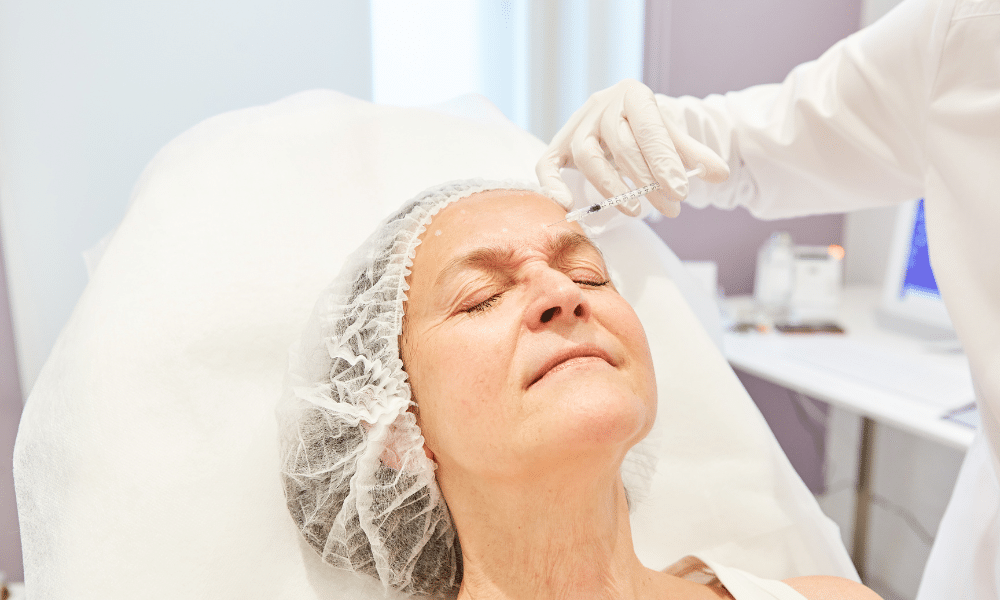
FaceTite procedures are less invasive, but you can expect slight redness and swelling 24 to 48 hours following the treatment. You will also see uneven complexion on the treated area while the skin heals.
However, despite these visible effects on the face and neck, most patients are allowed to go home and return to work in two to three days.
Some patients have experienced mild swelling and bruising for several weeks, but closely following an aftercare routine can help hasten the recovery period.
How Good Is FaceTite?

FaceTite’s selling point is delivering facelift-like results despite being a minimally-invasive procedure. Patients can enjoy a wide range of benefits while achieving their aesthetic goals, such as improved safety, lower surgical and facility fees, shorter downtime for recovery, and no scarring.
It skips the risks and hassle of more invasive surgical procedures involved in traditional facelifts without compromising the youthful appearance patients look for, making it a highly sought-after cosmetic procedure.
Is FaceTite Good for Jowls?
FaceTite is effective for jowls. Because it tightens the skin, removes excess fat, and contours the lower facial profile, including the jawline, it’s an excellent option to get rid of jowls.
What Are the Pros and Cons of FaceTite?
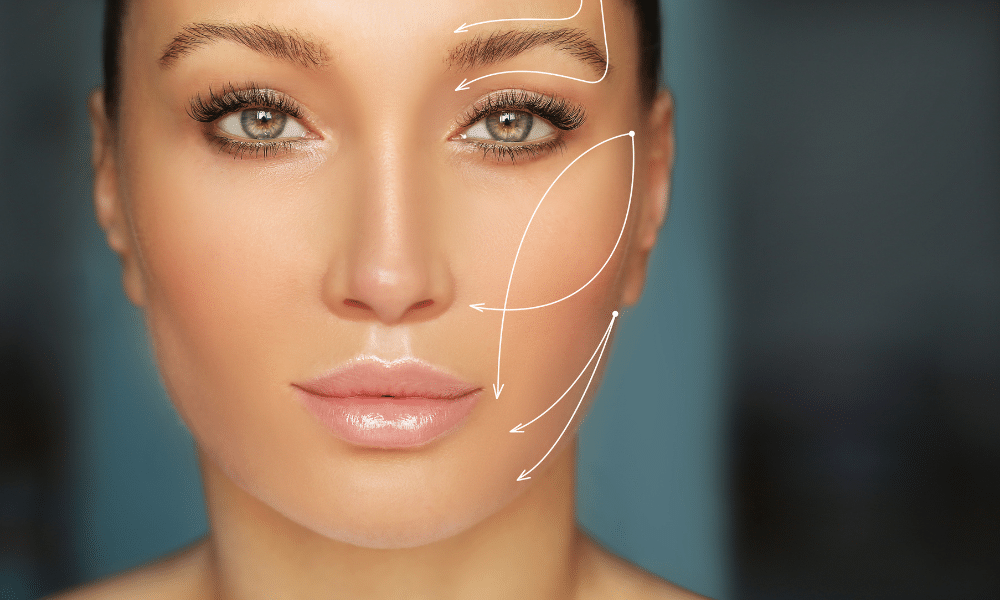
Here are the pros and cons of FaceTite:
Pros
It is less invasive.
As a less invasive outpatient procedure, it can be performed with local anaesthesia and requires fewer, tinier incisions. Patients experience minimal pain during the treatment and need not worry about resulting scars. Despite this, it produces tightened skin effectively.
It requires shorter downtime.
Patients can enjoy a shorter downtime for recovery following a FaceTite treatment, lasting only three to four days. They can return to work and activities with little to no side effects.
This is shorter compared to most non-invasive cosmetic procedures and skin-tightening laser treatments.
It gets rid of sagging skin, producing a slimmer contour.
With its advanced radiofrequency-assisted liposuction technology, FaceTite’s radiofrequency energy penetrates deeper into the skin than other RF and ultrasound energy treatments. It results in better fat liquefaction and coagulation, slimmer contours on the lower facial profile, and longer-lasting results of up to five years.
Results can be visible within a week.
Following the FaceTite procedure, you will notice firming and tightening on the treated area in a week. Some patients have also reported seeing the effects within the day. Its radiofrequency-assisted technology helps tighten existing collagen fibres immediately. As the body produces more collagen and elastin during recovery, its results are even more apparent in two weeks.
It is less expensive than surgery.
FaceTite is less expensive than traditional surgical facelift. FaceTite patients account for the lower surgery fees, facility costs, and overall shorter downtime, allowing them to spring back to their responsibilities in a few days. Invasive surgeries require longer recovery periods and cost more compared to non-invasive treatments.
Cons

It CAN BE pricey for a less invasive Treatment.
Compared to non-invasive treatments, skin-tightening laser procedures, and other less invasive procedures, FaceTite is still considered more expensive. It’s a fairly new and advanced technology, and its efficacy can account for its overall costs.
It is not a true non-surgical treatment, there is no doubt a recovery including swelling and bruising. You do need to have at least two weeks where you are not going to see to many people socially or professionally.
However, FaceTite is an investment that’s worth your hard-earned money. It can give you more confidence and even help your career.
It is patient-selective.
A FaceTite treatment can be selective. Patients with poor skin elasticity, skin contraction, and extremely loose skin are generally not good candidates for this procedure. Traditional plastic surgeries, such as facelifts and neck lifts, are better options for these cases.
Conversely, patients with mild or early ageing concerns that can be addressed by other non-invasive cosmetic procedures can look into less expensive alternatives to achieve their aesthetic goals.
It comes with risks and unwanted effects.
Because FaceTite procedures involve heat and energy, you can expect uneven skin discolouration and burning. Bruising and swelling can also manifest and last differently from one patient to another. Moreover, like other skin treatments, FaceTite doesn’t address all your skin concerns, such as ageing and textural issues, which produces inconsistent results as reported by previous, unhappy patients.
In rarer cases, you may experience uneven contouring from poor provider practices.
How Much Does FaceTite Cost?
FaceTite can cost from £5,000 depending on your facial characteristics, size of the treated area, location, and expertise of person completing. As a cosmetic procedure, it is not covered by traditional medical insurance.
It’s best to consult your provider for possible financing programs and discounts in your area before going through with the treatment.
Who Is a Good Candidate for FaceTite?
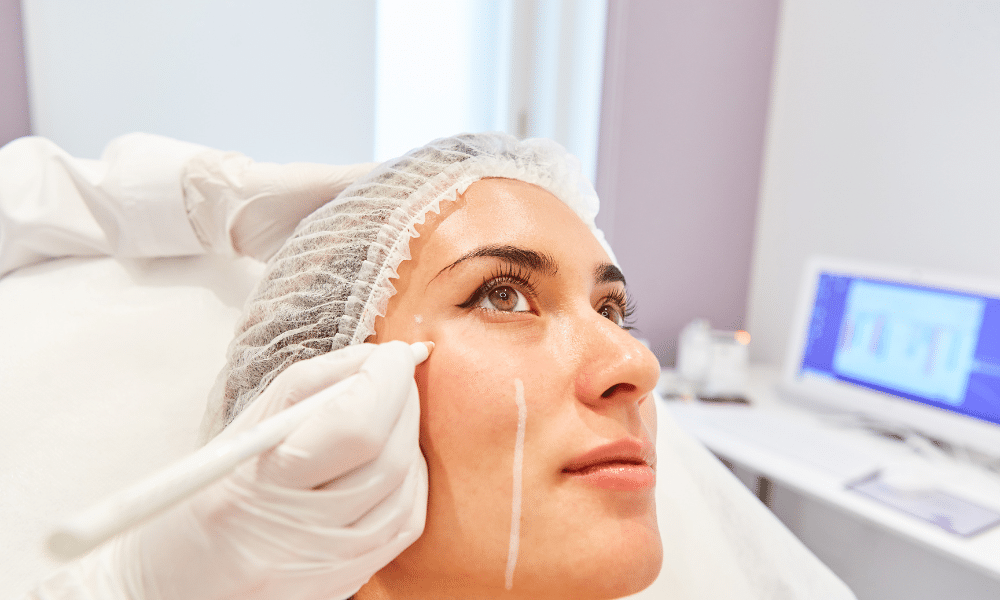
Patients who have concerns about facial ageing are good candidates for the procedure. Some people experience early signs of ageing and don’t look their age, and FaceTite is an excellent choice to address their skin issues.
While ageing affects everyone’s appearance, some men and women find themselves with sagging jowls and loose neck skin. Issues on the lower facial profile can also significantly age a person, and these concerns can affect their self-confidence and social energy drastically. Through this minimally-invasive treatment, FaceTite can dramatically improve their facial features by targeting the lower half of their face.
Similarly, people who want to maintain their facelift results are good candidates for FaceTite. It complements other cosmetic procedures well, and those who have undergone surgical facelifts in the past experienced no health concerns after going through a FaceTite treatment.
How Does FaceTite Work?
FaceTite treatment uses radiofrequency waves to destroy fat cells and stimulate collagen production in the treatment area. The now-liquid fat cells are suctioned out by traditional liposuction, creating a slimming contour around the lower facial profile. On the other hand, the increased collage production creates a toned and smoother effect on the skin for a youthful look.
Because it is a minimally-invasive procedure, it can be performed with simple local anaesthesia, which allows the provider to create a small incision on the treatment area. The cannula device is inserted into the incision, and the electrodes produce radiofrequency waves that disrupt fat cells and stimulate collagen production.
Visit Dr. Julian De Silva
FaceTite is a newer, less invasive technology that combines radiofrequency and liposuction. You are an ideal candidate for this treatment if you have mild to moderate signs of ageing but don’t want to undergo a surgical facelift.
I, Dr. Julian De Silva, offer a safe and effective FaceTite treatment that helps you achieve all of your aesthetic goals without the risk of getting skin burns. Contact us now for a comprehensive consultation! You may also visit my clinic at 23 Harley St, London W1G 9QN, UK.

